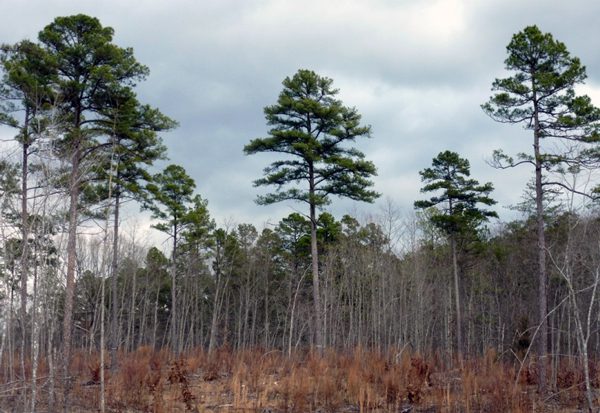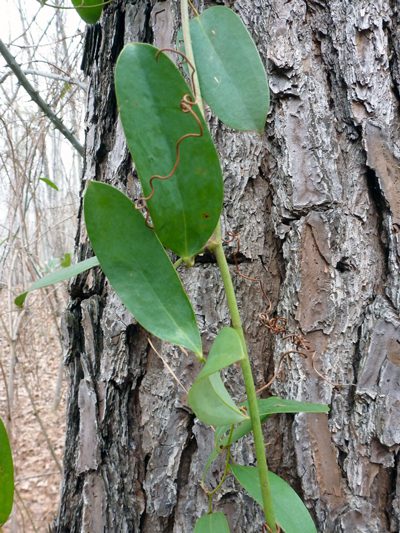Appreciating an unsung N.C. pine

In 1963, the General Assembly boldly proclaimed the official state tree of North Carolina would be – drum roll, please – the pine. What? You have to wonder why they didn’t bestow the honor on a particular species. Perhaps it’s typical of politicians who avoid taking a clear stand on an issue. In fairness, they were probably trying to be inclusive. The longleaf would have appealed to constituents down east. The white pine would have resonated with those up in the mountains. Pond or pitch pine would have created the same divide. Loblolly would have signaled a preference for timber. Alas, the legislature missed the opportunity to herald an unsung hero that occurs in every region of our state – the noble shortleaf pine.
The plight of the longleaf pine has been trumpeted in recent years, but there’s little awareness the shortleaf has also suffered significant declines. The longleaf is something of a diva, dominating a rarified ecosystem. The longleaf doesn’t try to out-compete other trees; it simply says, “If you can’t stand the heat, get out of the kitchen.” The shortleaf, on the other hand, is the reliable character actor who embraces even a minor role. It can coexist in a variety of mixed hardwood forests without demanding the limelight. Shortleaf pines often fade into the background, making it less apparent when they disappear from the landscape.
 Many forests in our region were high-graded for shortleaf in the past. Mature trees were harvested because the wood was so desirable, leaving the species unable to reclaim its place in the forest. Fire suppression probably also played a role. To regenerate, shortleaf relies on periodic disturbance to open the canopy and bare the soil. Research indicates the fire needed to maintain shortleaf was probably linked to cyclical droughts, occurring every 10 to 20 years. A shortleaf seedling forms a J-shaped crook at its base covered with lateral buds. If the top is killed, the buds will extend, allowing the tree to re-sprout. This trait is rare among conifers and might suggest an adaptation to fire.
Many forests in our region were high-graded for shortleaf in the past. Mature trees were harvested because the wood was so desirable, leaving the species unable to reclaim its place in the forest. Fire suppression probably also played a role. To regenerate, shortleaf relies on periodic disturbance to open the canopy and bare the soil. Research indicates the fire needed to maintain shortleaf was probably linked to cyclical droughts, occurring every 10 to 20 years. A shortleaf seedling forms a J-shaped crook at its base covered with lateral buds. If the top is killed, the buds will extend, allowing the tree to re-sprout. This trait is rare among conifers and might suggest an adaptation to fire.
Shortleaf also declined over much of its range as more people chose to plant loblolly. While there’s an appeal to having trees that grow quickly and enable shorter rotations, there are also benefits to managing for shortleaf. Wood with a tighter grain and smaller knots usually commands a higher price. The trees have an excellent form; they don’t taper at the top as much as a loblolly. A friend of mine describes them as having broad shoulders. Once their growth stagnates, the trees respond well after a thinning. Shortleaf pines are naturally long-lived and drought-tolerant, which makes them even more appealing in the face of climate change. They obviously perform well in the Uwharries – one of the state co-champion trees occurs on the LandTrust of Central North Carolina’s Low Water Bridge Preserve. A mixed pine and hardwood stand is less susceptible to pests like southern pine beetle, and having a variety of wood available for harvest also helps buffer against fluctuations in the timber market. Such a forest also has aesthetic and ecological benefits.
An existing mixed forest can easily be managed to promote the role of shortleaf, but it’s also possible to start from scratch. We were able to obtain cost-share funds to restore shortleaf on a tract after clear-cutting a loblolly plantation. These seedlings will tie into a small patch of existing, mature shortleaf that was thinned during the logging operation. The thinning opened up the canopy, and we’ve had a good response from grasses and forbs (generally, plants that are neither woody nor grasses)[1], providing enough fuel to carry a fire when we’re ready to burn. We aim to have merchantable timber while also creating a mixed forest and shortleaf savanna.
Nearby, a drain is graced with gnarled shortleaf. Laurel greenbrier (Smilax laurifolia) has scrambled up the trunks and swags from the lower branches. This vine is common in the coastal plain but rare in the Piedmont. The area has other interesting species such as river cane (Arundinaria gigantean), Virginia sweetspire (Itea virginica) and some sort of St. John’s wort (Hypericum sp.). Since west-facing slopes are hotter and drier, they’re more likely to burn. There was a wildfire in the vicinity in the 1970s. I remember smoke rising over King Mountain and planes dropping water on the flames. I like to think the fire ran up that drain, helping sustain the vegetation I observed some four decades later. We hope to incorporate the area into our burns so we can maintain and enhance this suite of plants in the shadow of our shortleaf pines.
To learn more about the benefits of establishing a shortleaf forest, contact Nathan Lowder at the Natural Resources Conservation Service office in Albemarle at (704) 982-6811, ext. 3.
[1] Vascular plant without significant woody tissue above or at the ground. Forbs and herbs may be annual, biennial, or perennial but always lack significant thickening by secondary woody growth and have perennating buds borne at or below the ground surface. In PLANTS, graminoids are excluded but ferns, horsetails, lycopods, and whisk-ferns are included. Definition from U.S.D.A. Natural Resources Conservation Service.